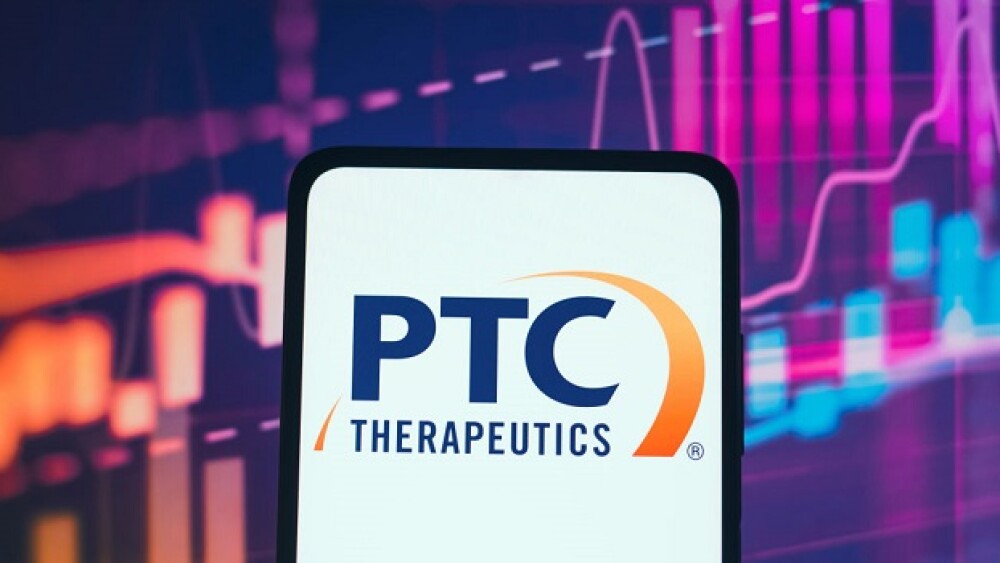Despite a disappointing showing in the Phase III MOVE-FA trial, PTC Therapeutics says it will move forward with regulatory talks for the Friedreich’s ataxia treatment. Meanwhile, the company is discontinuing several early-stage gene therapies and reducing its headcount.
Pictured: PTC Therapeutics logo on a phone screen/courtesy of SOPA Images/Getty Images
Topline data from the registrational Phase III study MOVE-FA showed PTC Therapeutics’ Friedreich’s ataxia candidate vatiquinone did not meet its primary efficacy endpoint of significant improvement in disease progression, the company announced Tuesday. Despite these results, the company said it plans to talk with the FDA about a potential regulatory path forward for the treatment.
Separately, PTC has kicked off a pipeline prioritization initiative, which will involve the discontinuation of several preclinical and early-phase R&D projects in gene therapy—as well as an 8% reduction in its workforce.
In an investor call Tuesday afternoon, PTC CEO Matthew Klein said that these strategic decisions will help the company cut its residual 2023 operating expenses by around 15%, as well as “ensure we are focusing our resources on programs that leverage the many unique strengths of PTC in R&D and product commercialization and can deliver meaningful return on investment and value to all of our stakeholders.”
PTC will continue its work on Upstaza (eladocagene exuparvovec), its gene therapy currently approved in the UK and in the EU for the ultra-rare pediatric disease aromatic L-amino acid decarboxylase. Upstaza is the first approved gene therapy that is administered directly to the brain.
Upstaza is still not approved in the U.S. PTC expects to submit its BLA in the third quarter of 2023.
MOVE-FA is a randomized, placebo-controlled and registration-directed trial enrolling more than 140 Friedrich ataxia patients. The study’s primary outcome was disease progression, as measured by the modified Friedreich Ataxia Rating Scale (mFARS) score for various symptoms such as swallowing and speech, upright stability and upper and lower limb coordination.
Treatment with vatiquinone improved mFARS scores by only 1.6 points greater than placebo, an effect that fell short of statistical significance.
Nevertheless, Klein pointed out during the call that the candidate elicited significant improvements in the bulbar and upright stability components of mFARS. In a sub-analysis of patients who completed the study, vatiquinone treatment also led to a significant improvement in fatigue relative to placebo.
As for safety, adverse events occurred at comparable rates between the vatiquinone and placebo groups, most of which were mild or moderate in severity. The most common treatment-related side effects were gastrointestinal symptoms. Two patients in the active treatment arm had to drop out due to treatment-related toxicities, as compared with three in the placebo group.
These signals of efficacy and good tolerability, together with the huge unmet medical need in the field of Friedrich ataxia, could help the company build its regulatory case, Klein said.
Tuesday’s back-to-back news from PTC put a damper on the company’s recent winning streak. Last week, the company scored a Phase III win in phenylketonuria when its candidate sepiapterin strongly decreased phenylalanine levels in the APHENITY trial.
In March 2023, the company earned the recommendation of England’s National Institute for Health and Care Excellence (NICE) for Upstaza, which would make the National Health Service responsible for making the treatment available for those patients that need it.
Tristan Manalac is an independent science writer based in metro Manila, Philippines. He can be reached at tristan@tristanmanalac.com or tristan.manalac@biospace.com.






